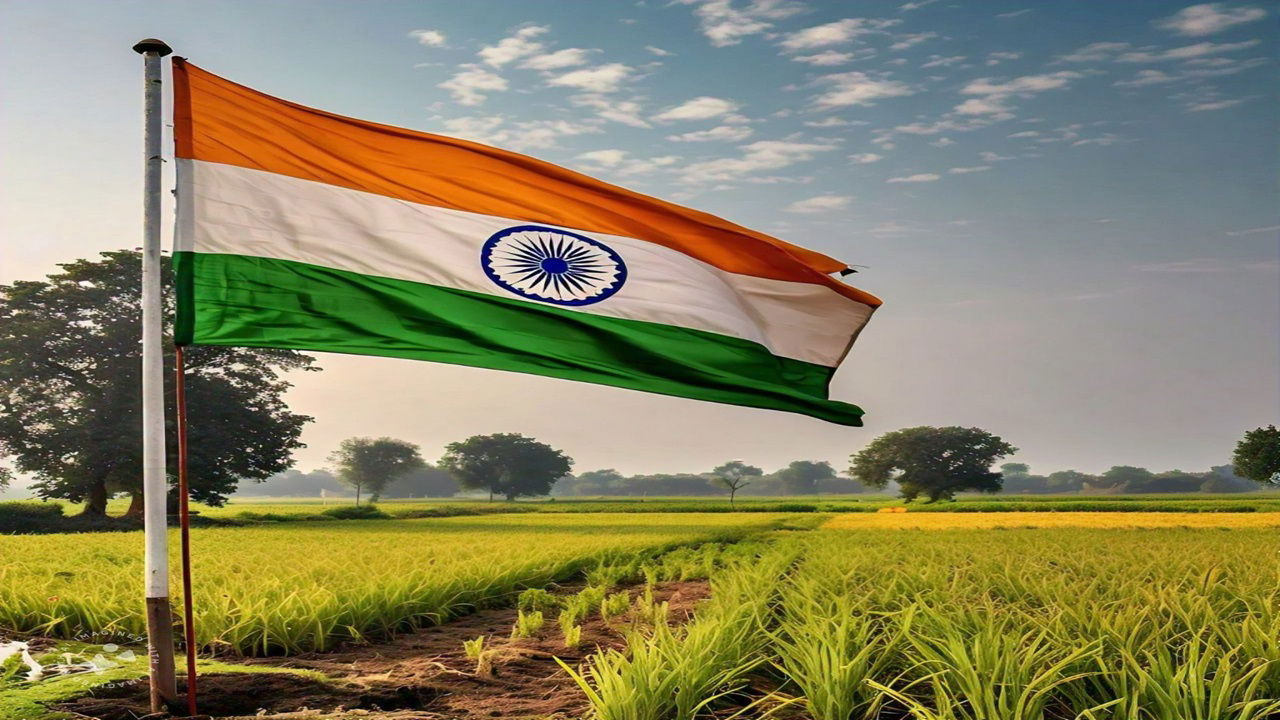
India's journey from food scarcity to agricultural self-reliance is worth exploring. In 1947, the nation faced severe food shortages and relied heavily on imports. However, through initiatives like the Green Revolution, economic reforms, and modernization efforts, India transformed its agricultural landscape, achieving self-sufficiency and becoming a global player in agricultural exports.
1947: Agriculture at Independence
-
State of Agriculture: Agriculture was in a state with severe food shortages, frequent droughts, and the Bengal Famine of the early 1940s.
-
Dependence on Imports: India was heavily reliant on food grain imports, particularly the PL-480 wheat variety from the USA, to meet its needs.
-
Economic Role: Agriculture accounted for about 50% of India’s GDP, highlighting its significance in the economy.
1950-51: Early Challenges and the Push for Self-Sufficiency
-
Food Insecurity: Rapid population growth puts pressure on agriculture, leading to widespread food shortages.
-
Post-Independence Strain: Wars in 1948, 1962, and 1965 further strained the country’s food supply.
-
Jai Jawan, Jai Kisan: Prime Minister Lal Bahadur Shastri’s slogan underscored the importance of farmers in securing the nation.
1964-1965: The Beginning of the Green Revolution
-
Need for Productivity: The government launched the Green Revolution, with the help of a geneticist, now known as the father of the Green Revolution (India) M.S. Swaminathan, to address food shortages.
-
Key Strategies: Introduction of high-yielding varieties (HYVs) of seeds, increased use of chemical fertilizers, and improved irrigation systems.
-
Focus Areas: The revolution primarily targeted self-sufficiency in wheat and rice.
1968-1978: The Success of the Green Revolution
-
Impact on Agriculture: Significant increases in wheat and rice production, especially in Punjab and Haryana.
-
Self-Sufficiency: India transformed from a food-deficit nation to self-sufficiency by the late 1960s.
-
Modern Farming: Adoption of modern farming methods and expansion of irrigated areas.
1980s: Emerging Challenges
-
Resource Degradation: Over-reliance on chemical inputs led to environmental concerns like soil degradation and water scarcity.
-
Economic Strain: Rising cultivation costs and declining profitability challenged the initial success of the Green Revolution.
-
Agrarian Crisis: Early signs of agrarian distress and reduced farm productivity.
1991: Economic Liberalization and Its Impact
-
Economic Reforms: India’s economic liberalization introduced neo-liberal policies, opening agriculture to global markets.
-
WTO and Competition: Establishment of the WTO in 1994 increased global competition and price fluctuations in agriculture.
-
Farmer Challenges: Farmers faced new challenges with changing trade policies and market dynamics.
Late 1990s-2000s: Agrarian Crisis and Farmer Suicides
-
Financial Distress: Rising input costs, declining productivity, and unfavorable markets led to widespread financial distress.
-
Farmer Suicides: This period saw a tragic increase in farmer suicides, highlighting severe socio-economic challenges.
-
Agricultural Challenges: Ongoing struggles in the sector despite earlier successes.
2000s: Agricultural Reforms and Modernization
-
Government Reforms: Introduction of crop insurance schemes, improved irrigation, and support for sustainable farming practices.
-
Diversification Focus: Shift from monoculture to crop diversification and investment in agricultural infrastructure.
-
Modernization: Efforts to enhance farming profitability and address ongoing challenges.
2020: Resilience During the COVID-19 Pandemic
-
Pandemic Challenges: Despite global disruption, Indian farmers achieved record food grain production.
-
Government Support: Launch of the Kisan Rath application and operationalization of agriculture markets during lockdowns.
-
Farmers' Resilience: Showcased the strength and adaptability of Indian agriculture during a global crisis.
2021-2022: Historic Achievements in Agricultural Exports
-
Record Exports: India’s agricultural exports reached an all-time high of USD 50.21 billion.
-
Key Products: Staples like rice, wheat, and sugar drove the growth in exports.
-
Global Competitiveness: Highlighted India’s progress towards Atma Nirbharta (self-reliance) in agriculture.
2023-2024: Future-Ready Agriculture
-
Sustainability Initiatives: Focus on sustainable agriculture through the National Mission for Sustainable Agriculture and other programs.
-
Modern Technologies: Adoption of drone technologies, scientific warehousing, and promotion of organic farming.
-
Investment in Agriculture: Schemes like the Agriculture Infrastructure Fund and Paramparagat Krishi Vikas Yojana are driving investment and innovation.
Indian agriculture has evolved from food scarcity to self-reliance and global competitiveness. Continued focus on empowering farmers, modernizing agriculture, and promoting sustainability and manifesting a future marked by innovation, sustainability, and prosperity for Indian farmers, keeping agriculture central to India’s economic and social development.
















